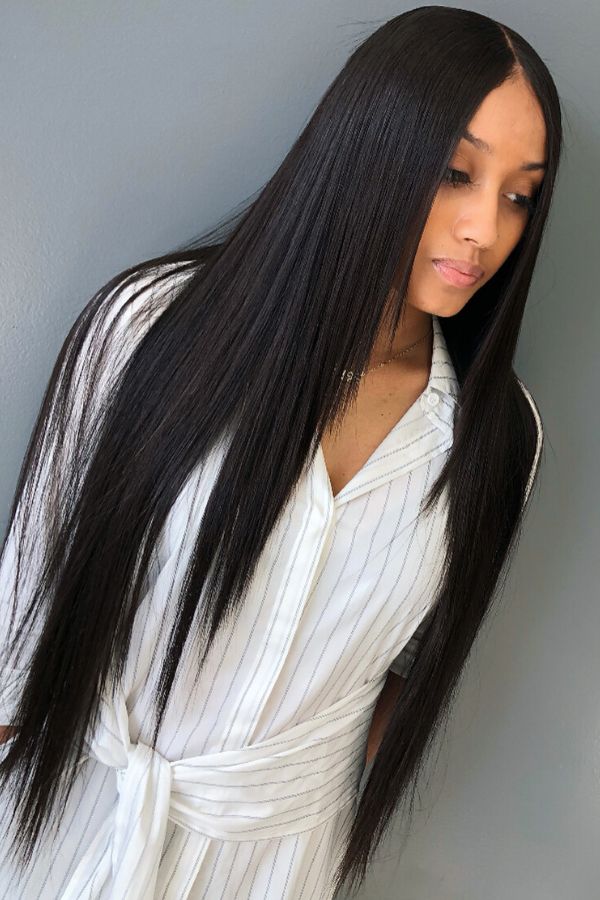Wig enthusiasts, we’ve all been there – the excitement of a fresh wig install and the confidence it brings. But let’s talk real-life stuff: how long can you rock that flawless wig before it’s time for some readjustment? Buckle up, because we’re diving into the world of wig installs and the million-dollar question: How long does a wig install last? From nights out on the town to lazy Sundays, we’re breaking down the lifespan of your wig slay and sharing tips on how to stretch it out like a true hair magician. Get ready to slay, swap, and strut with your wig looking fierce as ever!
How Long Does a Wig Install Last?
Short-Term Glam (1-2 Weeks)
For some wig installations, particularly those that use adhesives, the initial allure might last about one to two weeks. This is an excellent choice for special occasions, events, or short bursts of new style. These methods typically require careful handling to prevent premature lifting or damage.
Mid-Term Elegance (2-4 Weeks)
A wig installed using sewing or gluing methods can last for a longer duration, ranging from two to four weeks. Regular maintenance and proper care play a crucial role in extending this timeframe. Gentle washing, detangling, and avoiding excessive heat styling can help maintain your wig’s appearance.
Long-Term Sophistication (4-8 Weeks and Beyond)
With meticulous care and occasional touch-ups, your wig install can remain fresh and vibrant for up to eight weeks or even longer. Sewn-in wigs tend to have a longer staying power, provided you’re diligent about preserving the quality of the installation and practicing proper hair care.
Factors Affecting the Duration of a Wig Install
Quality of the Wig
The quality of the wig itself greatly influences its durability. Higher-quality wigs made from human hair or premium synthetic fibers tend to last longer compared to cheaper alternatives. Investing in a high-quality wig can make a significant difference in the lifespan of your wig install.
Installation Method
The method used to install the wig also affects its longevity. There are various techniques such as glueless, sew-in, adhesive, or wig clips. Each method has its pros and cons when it comes to longevity. Glueless installations generally offer more extended wear time, while adhesive methods may require more frequent touch-ups.
Maintenance Routine
Proper maintenance is crucial for maximizing the lifespan of your wig install. Regular care includes brushing, washing, conditioning, and storing the wig correctly. Neglecting these maintenance practices can lead to tangling, shedding, and overall degradation of the wig, reducing its lifespan.
Lifestyle and Usage
How you use and wear your wig impacts its lifespan. If you frequently engage in physical activities like exercising or swimming, your wig may experience more wear and tear. Moreover, excessive heat styling and chemical treatments can also shorten the lifespan of your wig.
Tips to Prolong the Lifespan of a Wig Install
To ensure your wig install lasts as long as possible, consider implementing the following maintenance tips:
Gentle Washing and Conditioning
Regularly washing your wig is essential for preserving its appearance and lifespan. Use lukewarm water and mild shampoo specifically formulated for wigs. Avoid rubbing or twisting the hair during washing to prevent tangling. After washing, apply a conditioner designed for wigs to keep the hair soft and manageable.
Proper Storage
Store your wig properly when not in use to minimize any potential damage. Place it on a wig stand or store it in a breathable bag away from direct sunlight, heat, or excessive moisture. This helps maintain the shape and quality of the wig, preventing unnecessary wear and tear.
Limit Heat Styling
Excessive heat styling can damage both synthetic and human hair wigs. While some wigs are heat-resistant, it’s best to limit the use of hot styling tools to prolong their lifespan. Explore alternative styling methods like using flexi-rods or cold rollers to achieve different looks without subjecting the wig to excessive heat.
Avoid Sleeping with a Wig
Sleeping with your wig on can cause friction and tangling. It is advisable to remove the wig before going to bed to prevent unnecessary stress on the hair fibers. If you prefer wearing a wig while sleeping, consider investing in a silk or satin pillowcase, which reduces friction and protects the hair.
Regular Maintenance and Check-ups
Schedule regular check-ups with a professional stylist experienced in wig installations. They can assess the condition of the wig, make necessary adjustments, and advise on proper care. Additionally, follow a consistent maintenance routine by brushing the wig gently, detangling any knots, and inspecting the wig for any signs of damage.
FAQs
- How long does a wig install typically last? The duration of a wig install can vary depending on factors such as quality, installation method, maintenance routine, and usage. On average, a well-maintained wig install can last anywhere from two to six weeks.
- Can I wash my wig while it’s installed? While it is possible to wash your wig while it’s installed, it is generally recommended to remove the wig for washing. This allows for thorough cleaning and ensures that both the wig and your natural hair remain clean and healthy.
- How often should I brush my wig? It is advisable to brush your wig daily or as needed to remove tangles and prevent matting. Use a wide-toothed comb or a wig brush specifically designed for wigs to avoid damaging the hair fibers.
- Can I swim or exercise with a wig installed? Swimming or exercising with a wig installed is possible but may require additional precautions. Opt for waterproof adhesives or consider wearing a swimming cap to protect the wig from chlorinated water or excessive sweat. Rinse the wig thoroughly after swimming and gently towel dry to remove excess moisture.
- Can I color or style my wig after installation? It is generally not recommended to color or chemically alter a wig after it has been installed. Human hair wigs may be more versatile in terms of coloring, but it is best to consult with a professional stylist who specializes in wig care for guidance and to avoid damaging the wig.
Final Thoughts
The longevity of a wig install depends on various factors such as the quality of the wig, installation method, maintenance routine, and lifestyle. By investing in a high-quality wig, following a proper maintenance routine, and taking necessary precautions, you can prolong the lifespan of your wig install. Remember, regular check-ups with a professional stylist can help ensure that your wig remains in optimal condition. So, embrace the versatility and convenience of wigs while keeping in mind these tips for an extended and enjoyable wig-wearing experience.




